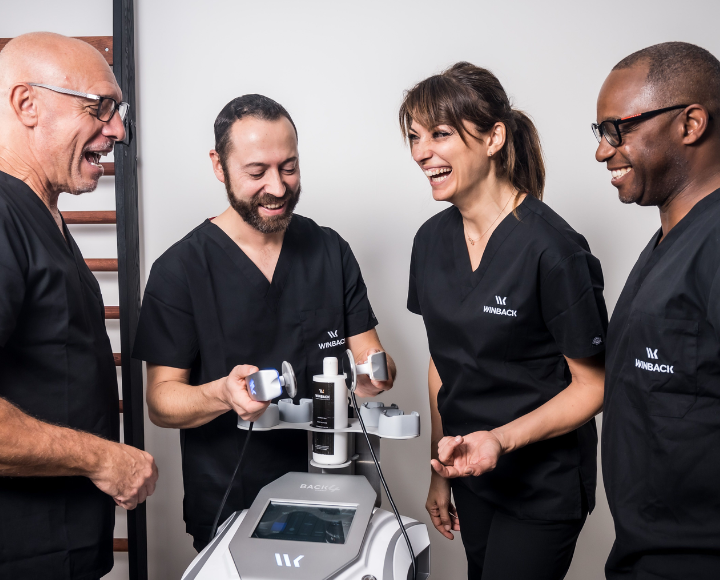How to treat myofascial syndrome with Winback
How to treat myofascial syndrome with Winback TECAR therapy
Painful myofascial syndrome (PMS) is a functional, painful and reversible disturbance of the musculoskeletal system.
MDS-related pain is musculoskeletal, local and referred; it is perceived as deep, constant and diffuse. Its origin is located and maintained in one or more myofascial trigger points.
A myofascial trigger point is a sensitive or even painful pressure-reactive area, a few millimeters in size, located in a striated muscle or fascia. It can be present in two forms: the latent trigger point or the active trigger point.
The latent trigger point causes a stiffness or restriction of mobilité́. It is painful locally only on palpation. Once active, it generates referred, specific pain, the topography of which depends on the muscle considéré́, often associated with neurovegetative reactions; in the form of vasoconstriction, pallor or sweating.
Various shapes
Scientific research agrees on a hypothesis concerning the genesis of trigger points: almost total hypoxia of the muscle cells seems to be at the center of all actions. These trigger points and the resulting painful myofascial syndrome can be found in any skeletal muscle, be it in the upper or lower limbs, a spine or the pelvic region.
In perineal myofascial syndrome, the muscles concerned by the presence of active trigger points are more particularly the internal obturator, with referred pain at the ano-coccygeal level and on the posterior aspect of the thigh, but also the sphincter muscles of the anus, the anus elevator, the coccygeal muscles or the ischio-cavernous and bulbo-cavernous muscles, each with its own referred pain.
Neurovegetative reactions may be, in the context of perineal myofascial syndrome, cystals, suprapubic weights, dysuria or proctalgia, making diagnosis difficult. Triggering factors may be postural disorders, pelvic trauma related to falls, childbirth, pelvic surgery, repeated mucosal damage or psycho-emotional stress.
Winback tecartherapy and perineal myofascial syndromes
The objective will therefore be to make these trigger points yield by revascularizing the reaction zone, improve muscle trophicity, and work on the entire pelvic posture. After a precise assessment and identification of the trigger points reproducing our patient’s symptomatology, the first step will be to pump the trigger point with the CET electrode. The second step will be a muscular stretching work to stretch the muscle in question between the neutral electrode and the RET electrode in 3.0. The overall postural work can then be done in 2.0, by proposing self-stretching exercises to open or close the pelvic ring, or to tilt the pelvis.
Those posts may also interest you


